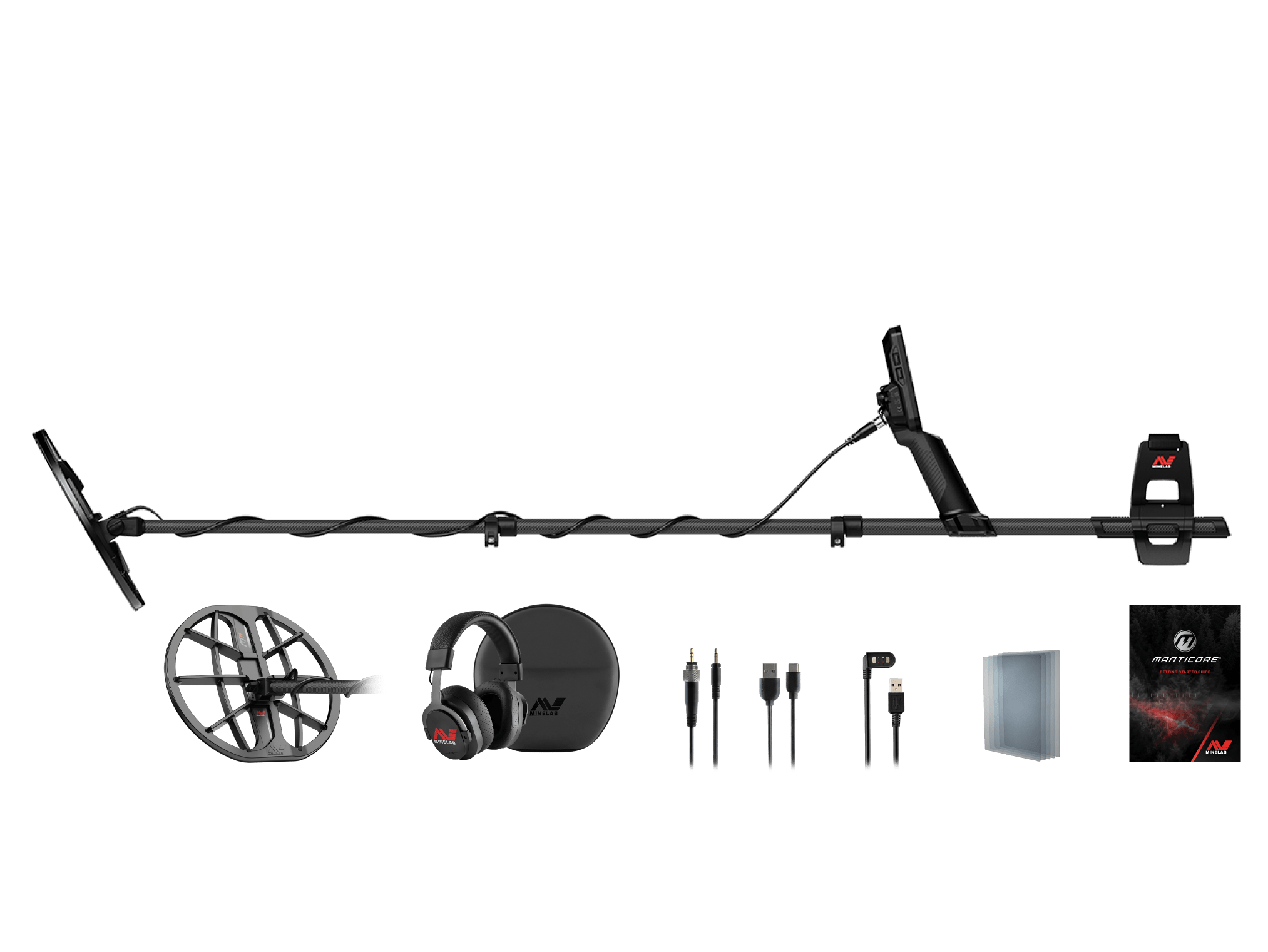The Minelab Manticore is one of the most powerful metal detectors on the market, especially for beach hunting. Whether you’re searching for gold, coins, or lost jewelry, understanding the right settings and Target IDs can significantly improve your finds. This guide covers the best beach settings, target identification, and expert tips to help you maximize your treasure-hunting success.
🏖️ Best Search Modes for Beach Hunting
Different beach environments require different settings. Here’s how to optimize your Manticore for dry sand, wet sand, and saltwater:
✅ Dry Sand – Beach General Mode
-
Ideal for coins, jewelry, and general detecting.
-
Best balance of depth and discrimination.
✅ Wet Sand & Shallow Water – Beach Deep Mode
-
Maximizes depth for deeper targets.
-
Works well in mineralized wet sand.
✅ Saltwater & Small Gold – Beach Low Conductors Mode
-
Targets small gold rings and thin chains.
-
Filters out high-conductive trash like aluminum foil.
🔧 Best Minelab Manticore Beach Settings
| Setting | Dry Sand | Wet Sand | Saltwater |
|---|---|---|---|
| Search Mode | Beach General | Beach Deep | Beach Low Conductors |
| Ground Balance | Auto | Auto/Tracking | Tracking |
| Sensitivity | 22-28 | 20-25 | 18-22 |
| Recovery Speed | 4-5 | 3-4 | 5-6 |
| Ferrous Limits | Medium | Medium | Low (to keep faint gold) |
| Audio Theme | Enhanced | Continuous | Enhanced |
| Threshold | Off | On (for deep signals) | On |
💡 Tip: Run Noise Cancel at the start of every hunt to reduce interference.
🎯 Minelab Manticore Target ID (TID) Guide
🔷 Coins & Cash
-
Silver Coins (Dimes, Quarters, Halves, Dollars) → 85-99
-
Modern Quarters → 85-90
-
Dimes → 80-85
-
Copper Pennies (Pre-1982) → 80-85
-
Zinc Pennies (Post-1982) → 72-78
-
Nickels (Key Gold Indicator!) → 25-30
🟡 Gold & Jewelry
-
Thin Gold Chains / Small Earrings → 8-20
-
Small Gold Rings (10K, 14K, 18K) → 20-45
-
Medium Gold Rings → 45-60
-
Large Gold Rings & Gold Coins → 60-80
-
Platinum Rings → 70-85
💡 Gold Trick: Most gold falls between 20-60—dig stable, repeatable signals!
⚙️ Common Beach Trash (That Mimics Gold!)
-
Small Foil (Candy Wrappers, Gum Wrappers) → 5-15
-
Aluminum Pull-Tabs (Modern) → 22-30
-
Older Pull-Tabs → 30-40
-
Can Slaw (Chopped-Up Aluminum Cans) → 40-80 (erratic, jumpy signals)
-
Bottle Caps (Steel/Corroded Iron) → 80-99 (but with scratchy tones)
💡 Tip: Use the 2D ID Display to tell gold apart from trash. Gold gives a solid, repeatable signal, while trash is more erratic.
🚫 Notch Discrimination – How to Reduce Trash Digging
If you want to focus on valuable targets, you can notch out some common trash items.
✅ Notch Out:
-
Bottle Caps: 85-99
-
Tiny Foil: 0-10 (But be cautious—some small gold falls in this range!)
⚠️ Avoid Notching Out Aluminum (20-40) – This is where many gold rings appear!
💡 Alternative Tip: Instead of aggressive notching, use the 2D Target ID screen to visually separate junk from treasure.
🔥 Pro Tips for Maximizing Beach Finds
✅ Run a Noise Cancel scan before detecting to reduce EMI.
✅ Dig anything in the 20-60 range for the best chance at gold.
✅ Use a slower swing speed in wet sand for deeper targets.
✅ Increase Recovery Speed to 5-6 in trashy areas for better target separation.
✅ Test your Manticore at home with gold and aluminum targets to learn their signals.
✅ Use VCO Audio (Variable Pitch) for a better sense of depth on faint signals.
✅ Watch for stable, repeatable signals—erratic signals are usually junk.
📌 Final Thoughts
The Minelab Manticore is a top-tier metal detector for beach hunting, gold prospecting, and relic hunting. By understanding the best settings and Target IDs, you’ll dig less trash and find more valuable targets.
Whether you're searching for gold rings, lost jewelry, or old coins, the right settings make all the difference. Take time to practice, experiment, and adjust your detector to your hunting conditions.
💬 Have questions or tips? Drop them in the comments below and share your best finds with the Minelab Manticore!




Dejar un comentario